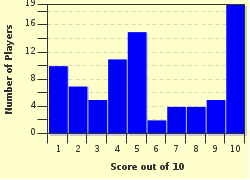Quiz Answer Key and Fun Facts
1. The only way for the walking public to enter and exit 'Thorney Island' is via military checkpoints. This is a shame as its perimeter is the first (or last) stage of a long distance footpath. Which of the following walks has this additional hazard?
2. From East Croydon station, through the concrete jungle of south London, heading south to meet the coast near Seaford then heading west until it reaches Newhaven. Which route have I just described?
3. Following the Beeching report in the 1960s many railway lines were closed. A number of these have been converted to recreational trails (although with detours around new building developments). Which of the following does not follow the route of a former railway line?
4. Which trail follows the approximate line of the shoreline as it was in 5th century AD?
5. The "North Downs Way" and the "South Downs Way" are relatively well known long distance footpaths running along the ridges of the North and South Downs respectively. Which of the following routes runs on a ridge of stone roughly parallel to the "North Downs Way" from Haslemere to Romney Marsh?
6. One of the UK's longer routes, at 610 miles in length, (not all of it in the south east of England), follows the route taken by King Charles II to escape to France following his defeat in 1659. What is the name of this trail?
7. Prior to the building of railways, London and the Sussex coast were linked by the building of a canal. The canal is now derelict, although conservation projects are under way. What footpath follows the route of the canal?
8. Which trail has a double bridge, (one stacked on top of the other) as it's symbol, that is used on the way markers indicating the route?
9. River valleys form the geographical basis for a number of walks. Which walk runs from Sevenoaks to Dartford and passes Lullington Castle?
10. In 1978 a long distance footpath was opened between Dover and Farnham. Between Winchester and Canterbury it roughly follows the route of the traditional "Pilgrim's Way". Which recreational trail is this?
Source: Author
paper_aero
This quiz was reviewed by FunTrivia editor
Exit10 before going online.
Any errors found in FunTrivia content are routinely corrected through our feedback system.

